Artist Carol Hartman's Heritage

Grasping the Land by Carol Hartman
How has your background influenced your art?
Coming from a very rural upbringing in northeastern Montana, I always see the wide view of a landscape. Even as a 2-year-old child, I would memorize everything about various locations on our ranch and the old homesteads long ago forgotten. Throughout my school years, I was always the one painting windows and making school posters.
When entering MSU Bozeman, without any formal art training, I was enrolled in the Experimental Section to either "sink or swim" with nationally recruited artists. I loved it and I never looked back.
My Masters degree in Fine Arts is from California State University Fresno. I've been fortunate to work in the arts my entire life, exhibiting across the USA and Europe, eventually teaching art, and directing the campus art galleries at CSU Sacramento and CSU Fresno.
After 25 years of creating Interactive Electronic Installations dealing with biases and prejudices, I now work entirely in oil paintings. With a continued emphasis on revealing personal choices, I returned to Montana in 2009 to delve into choices made by early pioneers of the West and their effect upon the land through time.
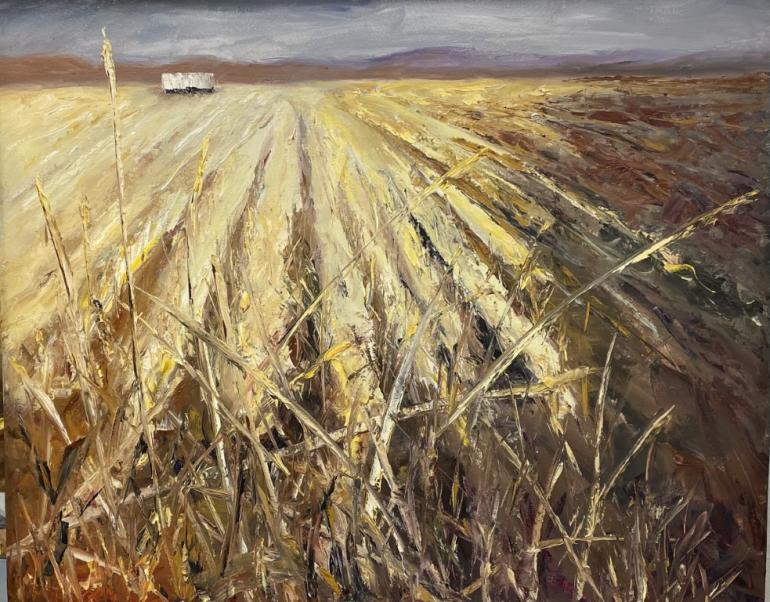
Straw by Carol Hartman
Please tell us about how Montana has influenced and inspired your work.
My love of Montana's rugged history and my appreciation of those who came before me influence my work more than anything else.
Montana's rich heritage is near and dear to my heart. My desire to learn about that history through the early inhabitants of the land leads to the opportunity to help tell the story of the growth of our society in the West. Reflecting upon the difficulties early peoples faced as they developed a civilization helps tell the story of 19th and 20th century America. Pride in our forefathers help shape who we are today. The story of those who tended the land before the 19th century also needs to be recognized. My goal is to find the significant elements of both those stories and their effects upon the land.
The extensive series I create tell the "story" about the West from the perspective of the "land," reflecting the positive and the negative effects mankind has had upon that land. I'm fortunate to have a family homestead history deeply involved in those early Montana days.
My Graduate teacher, Joyce Aiken, imparted the necessity of mutual artistic support for creative development. It is with this realization that I continually strive to discuss art concepts with other artists. I am particularly grateful to be involved in the newly organized Red Lodge Roosevelt Art Center where we artists with a common ground can discuss the creative process and support each other.
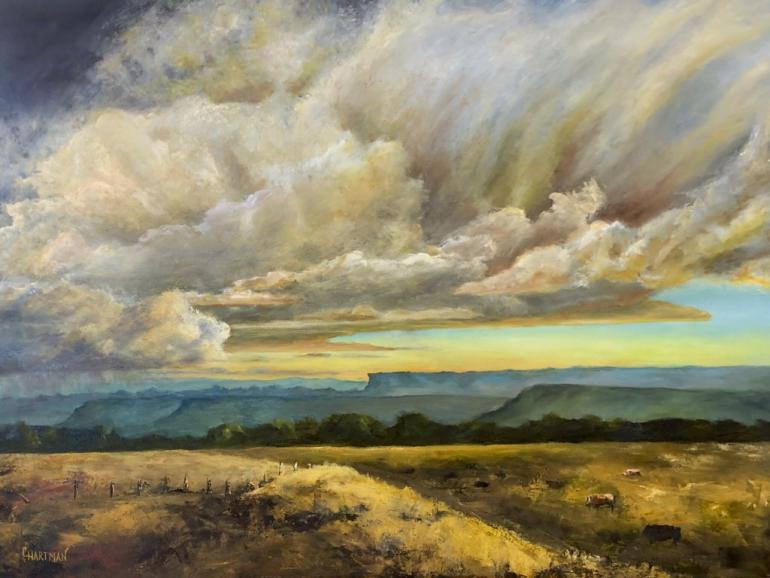
Homestead Ranch by Carol Hartman
Can you walk us through your creative process, from inspiration to approaching the blank canvas to completion?
The creative process is one of my most satisfying elements. During this Covid-19 experience, I have concentrated on "Within 50 Miles" of my hometown. There's an unending amount of subject matter everywhere I look!
Placing the horizon line either extremely high or extremely low creates additional drama within the artwork. Perspective lines lead the viewer deep into the imagery. An extremely close foreground continues to add to the drama of being "within" the painting itself. I prefer the viewer to feel as though they are not just "looking" at an image, but viewing the image from the inside, thereby becoming an active participant of the painting.
Composition, movement, color, line, and texture all come together in the design elements. Admittedly, I'm a "messy painter," usually getting as much paint onto me as onto the canvas! Beginning with large hand movements to block in the energy and the dark areas, I move next to a more refined stage, eventually pulling out finer details using my hands and various scrapers. The painting itself reflects upon the specific moments or features of each chosen location.
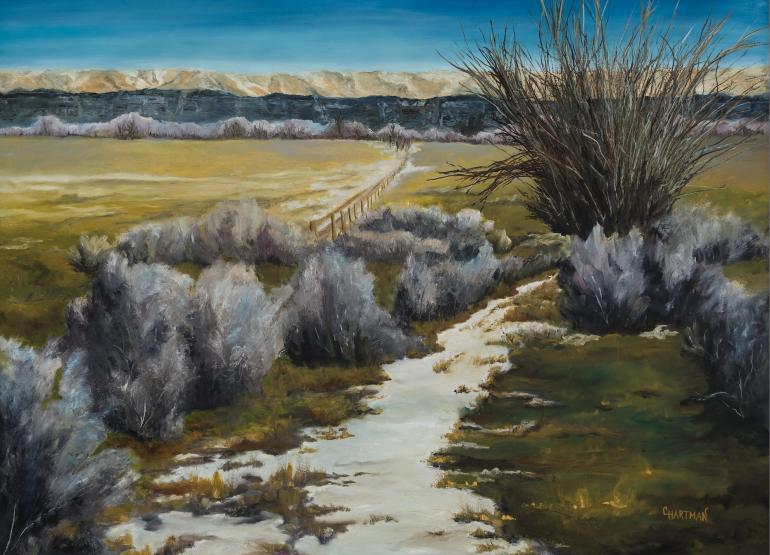
Glory Land by Carol Hartman
You have a unique painting process when working with large 48" birch panels. Can you tell us about that process?
Large painting surfaces of cradled Baltic birch allow more open movement within the art piece. The cradled boards are painted front and back with KILZ oil-based primer, then sanded before beginning. I seldom use a brush. I prefer painting with my hands, pallet knives, paper towels, and large kitchen scrapers. The hard surface of Baltic Birch panels stands up to my pounding and scraping upon them. Since I frequently work on-site from my Travel Trailer, I prefer the sturdiness of the boards to withstand the vigors of bumpy roads and windy days as well.
My painting style involves mixing the oil paints directly on the board surface more often than on my palette board, thus allowing more spontaneity while working. Attention to perspective, composition, and movement are critical to my personal method of allowing the painting to tell its own story. I tend to use Linseed Oil and/or Neo-Megilp as my medium. After the necessary drying time, my preference for varnish is a gloss GamVar.
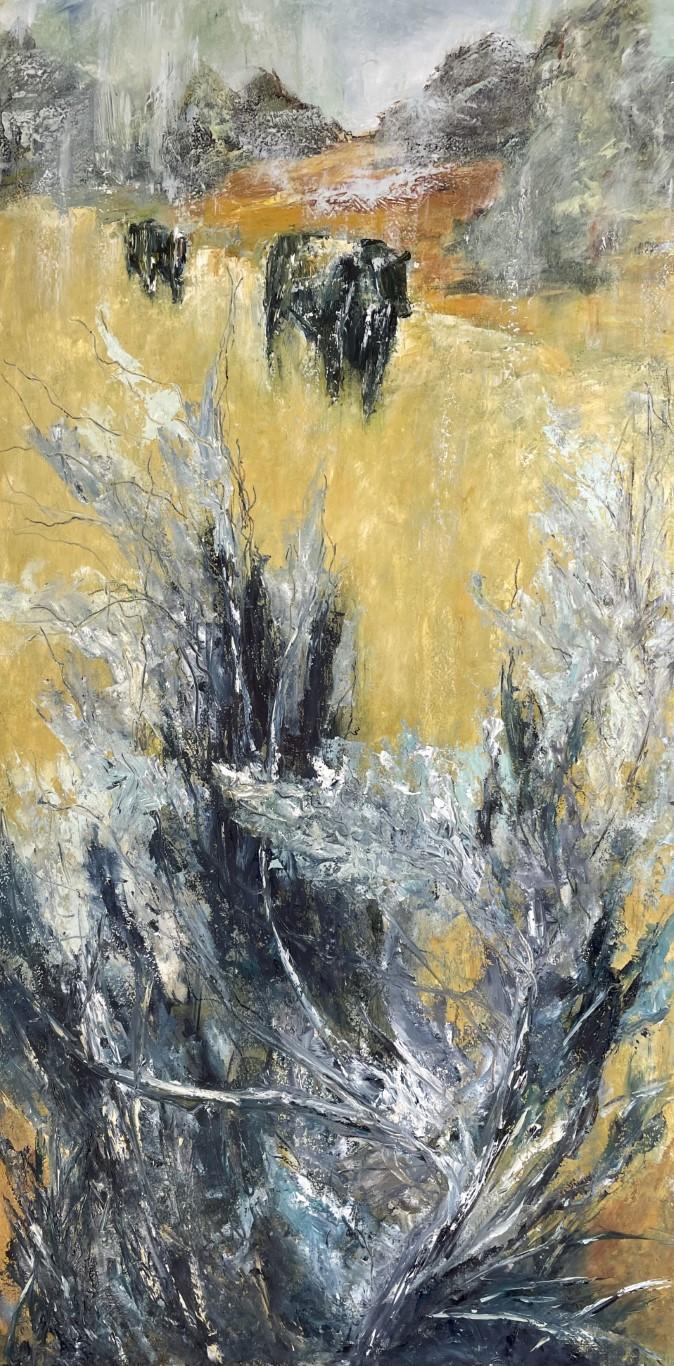
Sage by Carol Hartman
Your work often features Montana homesteads. Can you tell us about your relationship with Montana homesteads?
The "Homestead" series, which I am currently working on, involves research and conversations with home and landowners in Montana, many revealing intimate memories and experiences on their land. It's those moments that I reflect upon as I design my paintings, many of which are family commissions to hold those memories for future generations. I'm always open to new challenging custom paintings.
As a descendant of 1880's homesteading families, I have always identified very strongly with the land itself. Wide open spaces bring life into my work. My paintings are created to honor those who came before me.
After researching the many Homesteads and the Overland and Waterways West, I reflect upon the changes to the land as it appears today, some positive and some not so positive. I am truly intrigued by the stories I hear from descendants of those early settlers. I don't want those hard-working peoples nor their contribution to their families to be forgotten as more and more families are selling their family property, never to set foot on that land again!
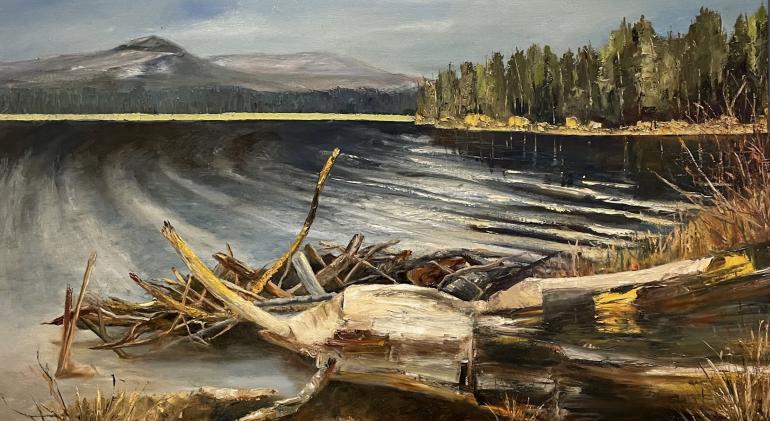
Driftwood by Carol Hartman
What are you working on now, and where do you see your work taking you over the next few years?
Because I work in large series and of historical nature, my exhibitions are usually through museums. My current work on "Riverways West" has developed into a two-week residency this August with the Upper Missouri River Breaks National Monuments. It features an August solo and a September solo at the Fort Benton Interpretive Center. Rivers played a very important part in Montana's history, both before and after steamboats traversed from St. Louis to Fort Benton as well as on the Yellowstone River to the Billings area.
Also in August, as a new member of the "Wild Bunch" artists, I will be joining them at the Hampton Inn Convention Center in Great Falls for an exhibition August 19-21.
This rest of this year will be about preparing artwork for previously scheduled solo museum exhibitions and setting aside time to learn more about our Montana homesteading history. My favorite part is working with families to preserve their favorite memories of Montana by painting commissions for them. This, above all else, is most satisfying!
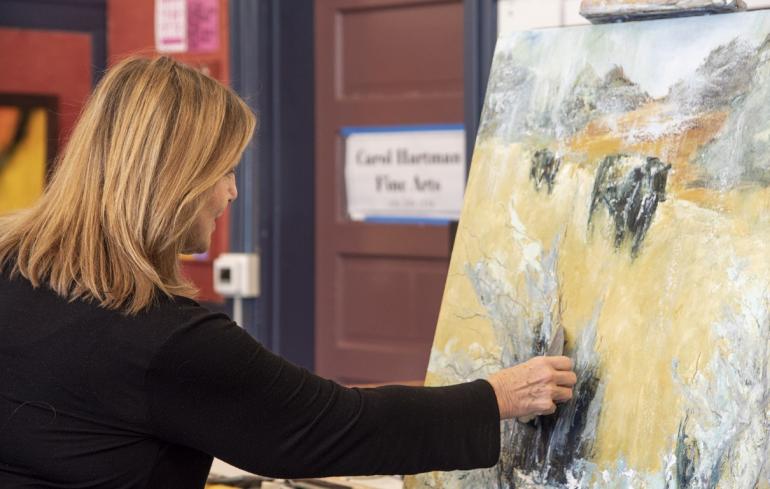
Photo courtesy of Carol Hartman

For over twenty years Carol Hartman's interactive electronic installations, dealing with biases and prejudices, were shown from California to New York to the Chicago Arts Institute. Since 2009, her current series of large oil paintings have been exhibited in multiple galleries across the U.S. and Europe. Childhood days on her family homestead overlooking the Missouri River, specifically near Fort Kipp and Fort Union, developed a deep yearning to learn more about those people who have come before her and how they changed that landscape. After leaving her faculty assignments teaching Aesthetics and Criticism of Art at California State University Sacramento and as Gallery Director at CSU Fresno, she relocated back to her rural roots in Montana in 2009. Carol has now been on a long-term exploration and visual documentation of those early homesteading days in the region, the many trails used to travel to Montana, and how it has altered the American soil. She continues to have two or three solo museum exhibitions of her large colorful oil paintings each year.
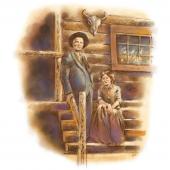




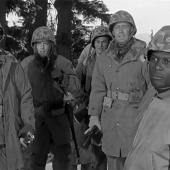

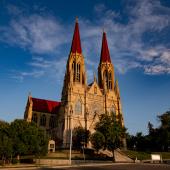


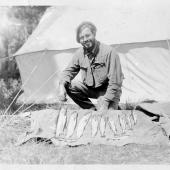
- Reply
Permalink